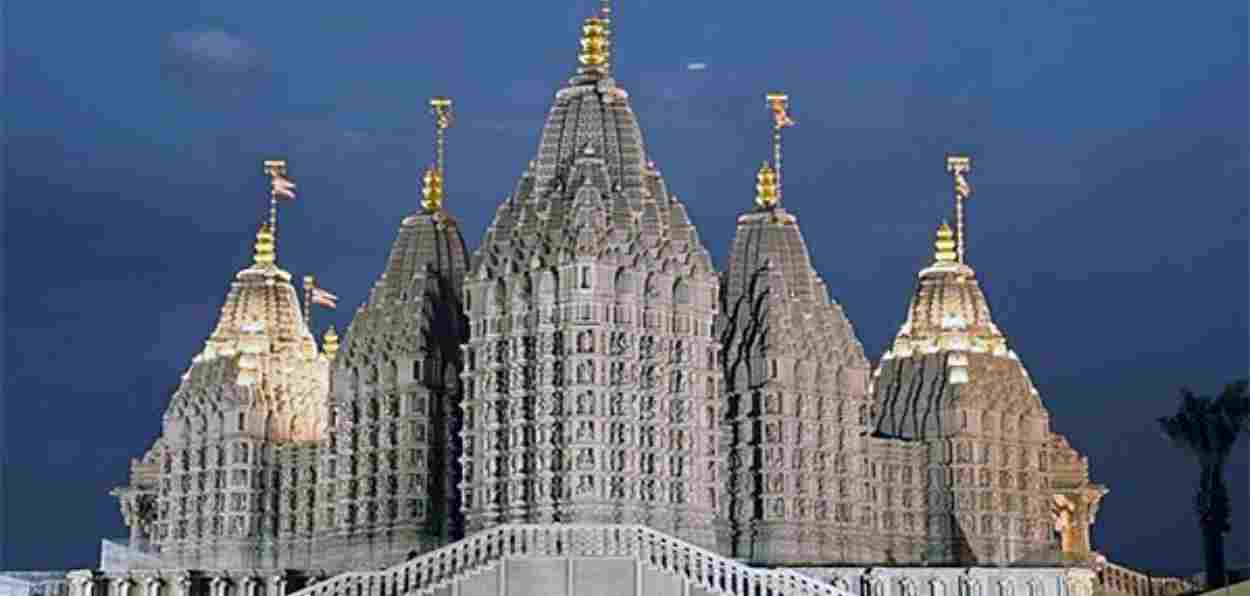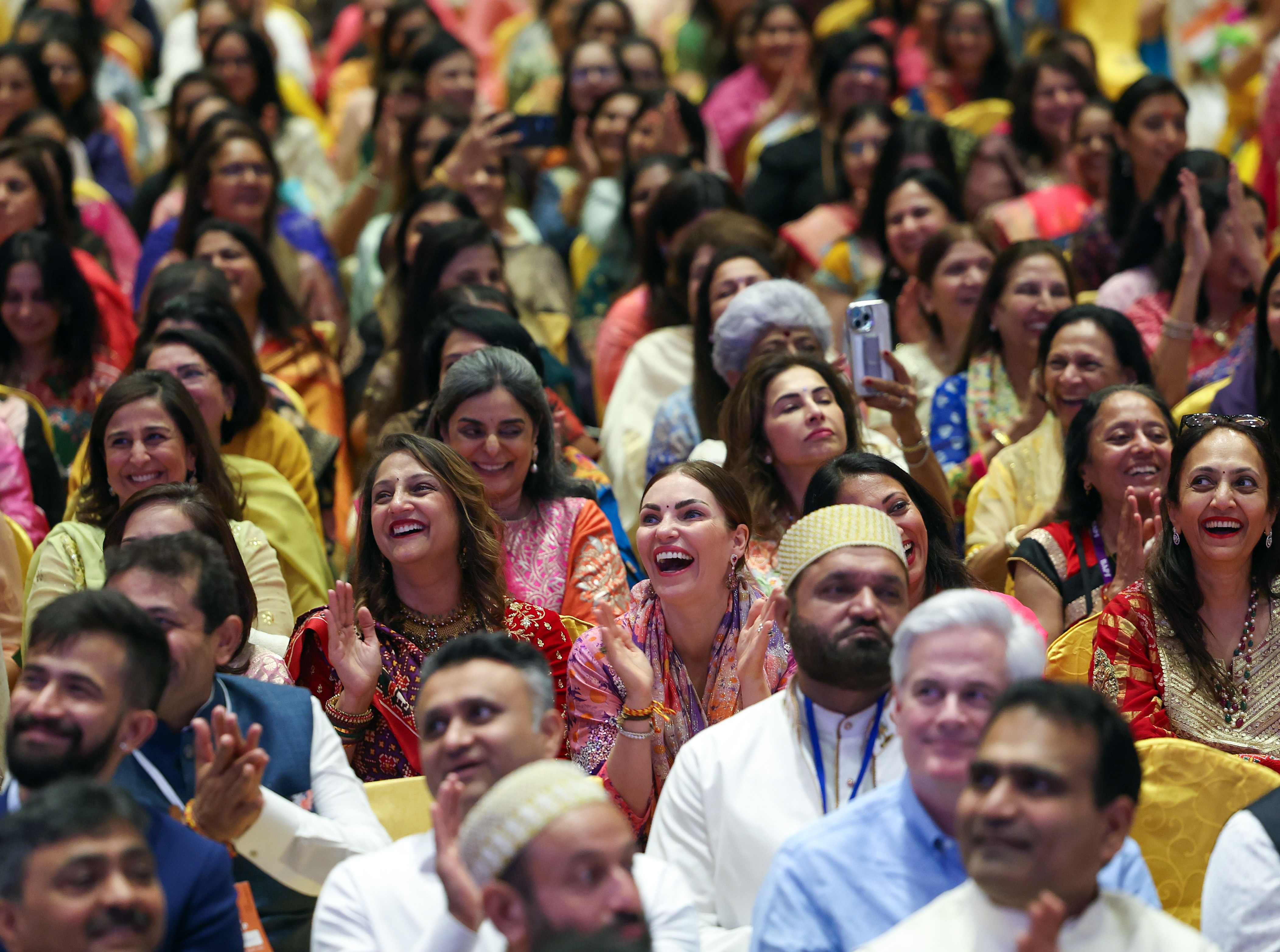
Rita Farhat Mukund
The magnificent BAPS Mandir in Abu Dhabi has a rich story behind it. The vision for making this temple does back to April 1997 when Pramukh Swami Maharaj, the 10th spiritual guru and head of the sect, envisioned a dream of nurturing unity amid diversity to foster closer ties among nations, cultures, and religions.
The temple's symbolic carvings incorporate indigenous UAE camels, falcons, and narratives from diverse civilizations, serving as a testament to cultural inclusivity.
With the guidance of the Bochasanwasi Akshar Purushottam Swaminarayan Sanstha (BAPS), the construction of the temple involved a team of diverse professionals: a Catholic Christian serving as the lead architect, a Sikh overseeing project management, a Buddhist contributing as the foundational designer, a Parsi consortium managing construction, and a Jain director.
Rahul Easwar, an Indian public policy commentator and activist from Kerala wrote on X, “It is a "#Hindu Temple Land given by #Muslim King, Architect a #Christian, Project Manager a #Sikh, Foundational designer a #Buddhist, construction company #Parsi, Director a #Jain."
The Christian architect behind the design of the BAPS Mandir is Gerard da Cunha and the Sikh project manager for the BAPS Mandir in Abu Dhabi is Davinder Singh.
 Diversity is reflected through the gathering at the inauguration of the BAPS Hindu temple in Abu Dhabi
Diversity is reflected through the gathering at the inauguration of the BAPS Hindu temple in Abu Dhabi
The temple is located in the Abu Mreikhah district, about 50 km away from Abu Dhabi’s largest Abu Dhabi Sheikh Zayed Grand Mosque where 50,000 Muslims gather every day for their prayers. Muslims opened their doors to allot that land to the Hindus for the first time in the history of Abu Dhabi. Once Swami Maharaj accompanied by the UAE's ministers of harmony and religious tolerance was visiting the Grand Mosque when he saw Allah carved in 99 different languages. Touched by this, he later built a Wall of Harmony where in 30 different languages they have written the word “harmony” to focus on the spirit of peace and unity.
Carved great epic stories from the Ramayana, Mahabharata, Shiva Purana, and Bhagavatam, and also tales from Arabian, Egyptian, Mesopotamian, Native American, European, and Chinese civilizations highlight the symbolism of unity in diversity. The temple uniquely depicts the lofty tales of the entire Asia civilizations' stories, the first time done in the region which previously only had mosques. The temple structure stands as a testament to the level of tolerance growing with deep cultural connections with UAE, India, and Asia on the whole.
A senior UAE official at the BAPS Temple
Swaminarayan Sampradaya has structures designed all over the globe such as in North America, the UK, California, and New Zealand all made differently. He particularly wanted the Abu Dhabi temple to be distinguishable from the other temples where he got seven shikars on the temple. Each shikar is dedicated to the seven Emirates of the royal family houses of UAE to honour them. Another interesting point is below the seven shikhars are Swaminarayan’s statue as well as Lord Jagannath, Lord Krishna, Lord Ram, his family as well as Krishna and Radha’s statues.
The BAPS Mandir, which is a blend of ancient architecture and modern technology such as modern Nano tiles to cool down the temple in the intense desert heat, the inaugural Hindu temple in the UAE constructed for $110 million, expense borne by Swaminarayan Sampradaya. The temple stands as a serene lotus amidst the desert landscape, symbolizing a beacon of global harmony. While this is not the first temple in the Middle East, this is the first temple in Abu Dhabi and BAPS Swaminarayan Mandir embodies a remarkable fusion of cultures and faiths, inaugurated by Prime Minister Narendra Modi in Abu Dhabi and attended by dignitaries from India and Abu Dhabi.
Actor Akshay Kumar at the BAPS Temple
Crafted from pink sandstone, a beautiful cultural heritage exported from Rajasthan, and marble imported from Italy, the mandir stands impressively at 108 feet tall, 262 feet in length, and 180 feet in width. It is the first traditional mandir to undergo digital modeling and seismic simulations with 300 earthquake sensors. Open-structured temples are suited for the climates in India and not UAE, thus the Nano tiles keep it cool, the modern tech, and water channels with water brought from Rivers Ganga and Yamuna.
The sequence to making the temple has taken several years. In August 2015, the UAE government made the landmark decision to allocate land for the Mandir. This generous gesture came from Crown Prince Sheikh Mohammed bin Zayed Al Nahyan; he gifted 27 acres of land to the mandir as a gesture of harmony between India and the UAE.
Interior of the BAPS temple
On February 10, 2018, representatives from BAPS met with Sheikh Mohamed and the Indian Prime Minister at the Presidential Palace. A significant moment occurred with the signing of a memorandum of understanding between India and the UAE in the presence of the royal family and over 250 local leaders. Prime Minister Modi emphasized the mandir's role as a sacred space where humanity and harmony converge. The ceremonial Shila Pujan, marking the consecration of the first stone for the mandir, took place on February 11, 2018.
On April 20, 2019, amidst the presence of Mahant Swami Maharaj, the spiritual leader of BAPS, the shilanyas vidhi, or foundation stone-laying ceremony, unfolded with guests and dignitaries from India and the UAE in attendance. Ambassador Navdeep Suri expressed gratitude to the UAE government, highlighting the mandir's significance as an enduring symbol of friendship between nations, cultures, and civilizations.
Over 200 volunteers hail from the UAE, Africa, the United Kingdom, the United States, India, and the Gulf devoted more than 690,000 collective hours to its construction. The mandir complex is comprehensive, featuring not just the traditional Hindu mandir but also a visitor centre, prayer halls, exhibitions, learning areas, a children's sports area, thematic gardens, water features, a food court, and a books and gift shop.
A UK official being shown around the temple
The architectural marvel features seven spires in the Nagara style, with a façade depicting universal values and seven cities of the UAE. The temple's design emphasizes coexistence through its distinct domes and the Wall of Harmony, showcasing milestones of construction.
The architectural style which is a mix of the Gujarati and Marwari goes between the 11th to 13th centuries when the Solanki Dynasty ruled in Gujarat. Swaminarayan Sampradaya too is from Gujarat, 1781 and Rajasthani is also a very important touch of Hassan Gurjara –Maru style, Nargara style of architecture.
During his meeting with the UAE President, Prime Minister Narendra Modi said, "I thank you for the warm welcome. Whenever I come here to meet you, I always feel I have come to meet my family. We've met 5 times in the last 7 months, it's very rare and reflects our close relationship.."
ALSO READ: Ajmer Sharif Sufis favour outside the court settlement of Kashi and Mathura
Vinod Tawde, the BJP National General Secretary, called it a beacon of shared humanity and said, “More than bricks and mortar, BAPS Hindu Mandir inspires us to embrace shared humanity and build a world, where peace and harmony reign supreme.”
Rita Farhat Mukand is an independent writer
